Experimental Study of Pore-Scale Water Flooding with Phase Change Based on a Microfluidic Model in Volatile Carbonate Reservoirs
Abstract
:1. Introduction
2. Experimental Material
2.1. Simulated Live Oil Fluid
2.2. Microfluidic Model Design
2.2.1. Casting Thin Section Selection
2.2.2. Analysis of Pore Throat Structure Characteristics
3. Experimental Equipment and Key Processes
3.1. Experimental Equipment
3.2. Experimental Procedure
4. Experimental Results and Analysis
4.1. Dynamic Occurrence Law of Oil and Gas in Depletion Stage
4.1.1. Microfluidic Experiment of Porous Carbonate Reservoir
4.1.2. Microfluidic Experiment of Fractured Porous Carbonate Reservoir with Fracture Parallel to Mainstream Line
4.1.3. Evolution Process of Gas Phase
4.2. Law of Water-Driven Oil and Gas Mobilization in Waterflood Development Stage
4.2.1. Microfluidic Experiment of Porous Carbonate Reservoir
4.2.2. Microfluidic Experiment of Fractured Porous Carbonate Reservoir with Fractures Parallel to Mainstream Line
4.3. Distribution Rule of Remaining Oil
4.4. Mechanism of Water Drive Oil and Gas
- (1)
- Replenishing formation energy
- (2)
- Protection of reservoir and fluid properties
- (3)
- Improve the degree of crude oil recovery
5. Conclusions
- (1)
- In the process of depletion development, the first degassing area of the porous carbonate reservoir is around the production well and the large pore throat area in the model, and the main gas migration channel is the small pore throat area. With the increase of the volume of gas, the gas phase in the small pore throat gradually expands, coalesces and migrates. The degassing sequence of the fractured porous carbonate reservoir is fracture, large pore throat region and small pore throat region.
- (2)
- The locations of the gas phase increase in the same order. Gas phase state and position and its change rule is as follows: in the early depletion stage, the gas phase occurs in fractures near the matrix, and rapidly forms a continuous gas phase in the fractures. In the middle depletion stage, the occurrence position extends from fractures near the matrix to the large pore throat region. Along with the continuous gas phase formation and migration in the matrix, the occurrence position extends to fractures, the large pore throat region and the small pore throat region.
- (3)
- When the depletion development is converted to water injection development, in the early stage of displacement, the injection water preferentially selects the large pore throat or fracture containing only simulated oil as the flow channel, and the displacement process shows an obvious feature of “displace the oil, not the gas”. As the injected water restores and maintains formation pressure, the dissolved gas dissolves continuously, and the area where re-dissolution occurs gradually expands from the main line to the edge, increasing the effective mobilization of water flooding.
- (4)
- Due to the strong heterogeneity of carbonate reservoirs, the remaining oil in this type of oil field is dominated by a contiguous cluster of remaining oil, followed by the dispersed porous remaining oil, and the membranous remaining oil. Moreover, fractures enhance the influence of heterogeneity, so that the water driving mobilization range decreases obviously, and the remaining oil saturation increases.
- (5)
- The microfluidic experiment of water-driven live oil can better simulate and observe the whole process of formation fluid seepage in a volatile carbonate reservoir with depletion and waterflooding development. Through analysis and summary, the oil and gas dynamic occurrence law in the depletion development stage and the oil and gas production law in the waterflooding development stage can be obtained. The experimental results show that this method is a feasible and accurate microscopic physical simulation experiment to study the oil–gas–water three-phase flow law in fractured porous carbonate reservoirs.
Author Contributions
Funding
Institutional Review Board Statement
Informed Consent Statement
Data Availability Statement
Conflicts of Interest
References
- Alizadeh, A.; Khishvand, M.; Ioannidis, M.; Piri, M. Multi-scale experimental study of carbonated water injection: An effective process for mobilization and recovery of trapped oil. Fuel 2014, 132, 219–235. [Google Scholar] [CrossRef]
- Chen, L. Simulation Study of Gas-Water Two-Phase Seepage Characteristics in Porous Media. Ph.D. Thesis, Dalian University of Technology, Dalian, China, 2014. [Google Scholar]
- Chen, Q. Study on the Production Characteristics and Development Mode of Near-Critical Volatile Clastic Reservoirs. Master’s Thesis, Southwest Petroleum University, Chengdu, China, 2017. [Google Scholar]
- He, G.; Zhang, L.; Lang, Z. Production characteristics of volatile oil reservoirs and factors affecting oil recovery. Fault-Block Oil Gas Fields 1996, 2, 23–26. [Google Scholar]
- Zhong, X.; Wang, L.; Chen, L. Development experience of weak volatile oil reservoirs in Changchun. Acta Pet. Sin. 2001, 1, 67–71. [Google Scholar]
- He, Y.; Ling, J. Water injection development of volatile reservoirs. West. Prospect. Proj. 2004, 4, 80–81. [Google Scholar]
- Huang, W.; Qin, X.; Du, X. Study on the development effect of water injection and gas injection in weak volatile black oil reservoir. Pet. Geol. Oil Recovery 2012, 19, 87–89. [Google Scholar]
- Gao, C.; Lei Yang, W.; Fu, Q.; Hou, S. Exploration and application of “water injection and pressure retention” development technology for weakly volatile reservoirs in carbonate rocks. Chem. Eng. Equip. 2016, 6, 90–93. [Google Scholar]
- Hai, X.; Roland, N. Experimental Study of Composition Variation During Flow of Gas-Condensate. In Proceedings of the SPE Annual Technical Conference and Exhibition, Houston, TX, USA, 28–30 September 2015. [Google Scholar]
- Leili, M.; Ehsan, R.; Dario, R.; Martin, B.; Giuseppe, M.; Franco, M.; Alberto, C.; Fabio, I.; Alberto, G. Combining Two- and Three-Phase Coreflooding Experiments for Reservoir Simulation Under WAG Practices. In Proceedings of the International Petroleum Technology Conference, Dhahran, Saudi Arabia, 13–15 January 2020. [Google Scholar]
- Li, J.; Su, H.; Jiang, H.; Yu, F.; Liang, T.; Zhao, Y.; Gao, Y.; Hossein, H. Application of microfluidic model in oil and gas field development. Pet. Sci. Bull. 2018, 3, 284–301. [Google Scholar]
- Li, J.; Jiang, H.; Wang, C.; Zhao, Y.; Gao, Y.; Pei, Y.; Wang, C.; Dong, H. Pore-scale investigation of microscopic remaining oil variation characteristics in water-wet sandstone using CT scanning. J. Nat. Gas Sci. Eng. 2017, 48, 36–45. [Google Scholar] [CrossRef]
- Liu, J.; Li, Y.; Bi, Y.; He, Q. Application of oil drive microsimulation experimental techniques to study the characteristics of reservoir residual oil microdistribution. China Offshore Oil and Gas. Geology 2000, 1, 52–55. [Google Scholar]
- Liu, Y.; Liang, W.; Wang, Q.; Yang, X.; Lu, Y. Analysis of the effect of water drive development in a weakly volatile reservoir with exceptionally low permeability in a hilly oilfield. Spec. Oil Gas Reserv. 2006, 4, 51–68. [Google Scholar]
- Lenomand, R.; Touboul, E.; Zarcone, C. Numerical models and experiments on immiscible displacements in porous media. J. Fluid Mech. 1988, 189, 165–187. [Google Scholar] [CrossRef]
- Molla, S.; Mostowfi, F. Microfluidic platform for PVT measurements. In Proceedings of the SPE Annual Technical Conference and Exhibition, Amsterdam, The Netherlands, 27–29 October 2014. [Google Scholar]
- Akbarabadi, M.; Alizadeh, A.; Piri, M.; Nagarajan, N. Experimental evaluation of enhanced oil recovery in unconventional reservoirs using cyclic hydrocarbon gas injection. Fuel 2023, 331, 125676. [Google Scholar] [CrossRef]
- Khishvand, M.; Alizadeh, A.; Piri, M. In-situ characterization of wettability and pore-scale displacements during two- and three-phase flow in natural porous media. Adv. Water Resour. 2016, 97, 279–298. [Google Scholar] [CrossRef]
- Vicencio, O.A.; Sepehrnoori, K. Simulation of Nitrogen Injection into Naturally Fractured Reservoirs Based on Uncertain Properties and Proper Matrix Grid Resolution. In Proceedings of the International Oil Conference and Exhibition, Cancun, Mexico, 31 August–2 September 2006. SPE-104038-MS. [Google Scholar]
- Song, P.; Yao, R.; Chu, S.; Zhen, Y.; Zhang, S. Mechanism of gas-liquid two-phase seepage and water drive characteristics of condensate reservoirs in Banqiao area. Pet. Geol. Eng. 2013, 27, 80–82. [Google Scholar]
- Uddin, M. Numerical Studies of Gas Exsolution in a Live Heavy-Oil Reservoir. In Proceedings of the SPE International Thermal Operations and Heavy Oil Symposium, Calgary, AB, Canada, 1–3 November 2005. [Google Scholar]
- Wang, C.; Li, X. Experimental study on microscopic pore modeling of condensate gas phase change. J. Eng. Thermophys. 2006, 2, 251–254. [Google Scholar]
- Zhao, W.; Zhao, L.; Wang, X.; Wang, S.; Sun, M.; Wang, C. Phase behavior characteristics and water-flooding development technical policy of weakly volatile oil in carbonate reservoirs. Pet. Explor. Dev. 2016, 43, 308–314. [Google Scholar] [CrossRef]
- Gao, J.; Kwak, H.; Marwah, A. Accurate Carbonate Pore System Characterization by Nuclear Magnetic Resonance and Micro-CT Techniques. In Proceedings of the SPE Middle East Oil & Gas Show and Conference, Event Canceled, 28 November–1 December 2021; SPE-204659-MS. Available online: https://onepetro.org/SPEMEOS/proceedings/21MEOS/3-21MEOS/D031S027R007/474514?searchresult=1 (accessed on 10 January 2023).
- Berg, S.; Gao, Y.; Georgiadis, A.; Brussee, N.; Coorn, A.; van der Linde, H.; Dietderich, J.; Alpak, F.O.; Eriksen, D.; van den Heuvel, M.M.; et al. Determination of Critical Gas Saturation by Micro-CT. Petrophysics 2020, 61, 133–150. [Google Scholar] [CrossRef]
- Lv, W. Application of CT Technology in Oilfield Development Experiments; Petroleum Industry Press: Beijing, China, 2020; pp. 7–15. [Google Scholar]
- Hou, J.; Qiu, M.; Lu, N. CT technology was used to study the microscopic occurrence state of core residual oil. Acta Pet. Sin. 2014, 35, 319–325. [Google Scholar]
- Lv, W.; Leng, Z.; Zhang, X. The mechanism of low-permeability core water flooding was studied by CT scanning technology. Pet. Geol. Oil Recovery 2013, 20, 87–90. [Google Scholar]
- Zhao, W.; Zhao, L.; Jia, P.; Wang, P.; Hou, J. Influence of micro-heterogeneity of fractured-porous reservoirs on the water flooding mobilization law. Sustain. Energy Technol. Assess. 2022, 53, 102694. [Google Scholar] [CrossRef]
- Zhao, W.; Zhao, L.; Wang, X.; Wang, S.; Sun, M.; Wang, C. Phase characteristics of crude oil in weakly volatile carbonate reservoirs and countermeasures for water injection development. Pet. Explor. Dev. 2016, 43, 281–286. [Google Scholar] [CrossRef]
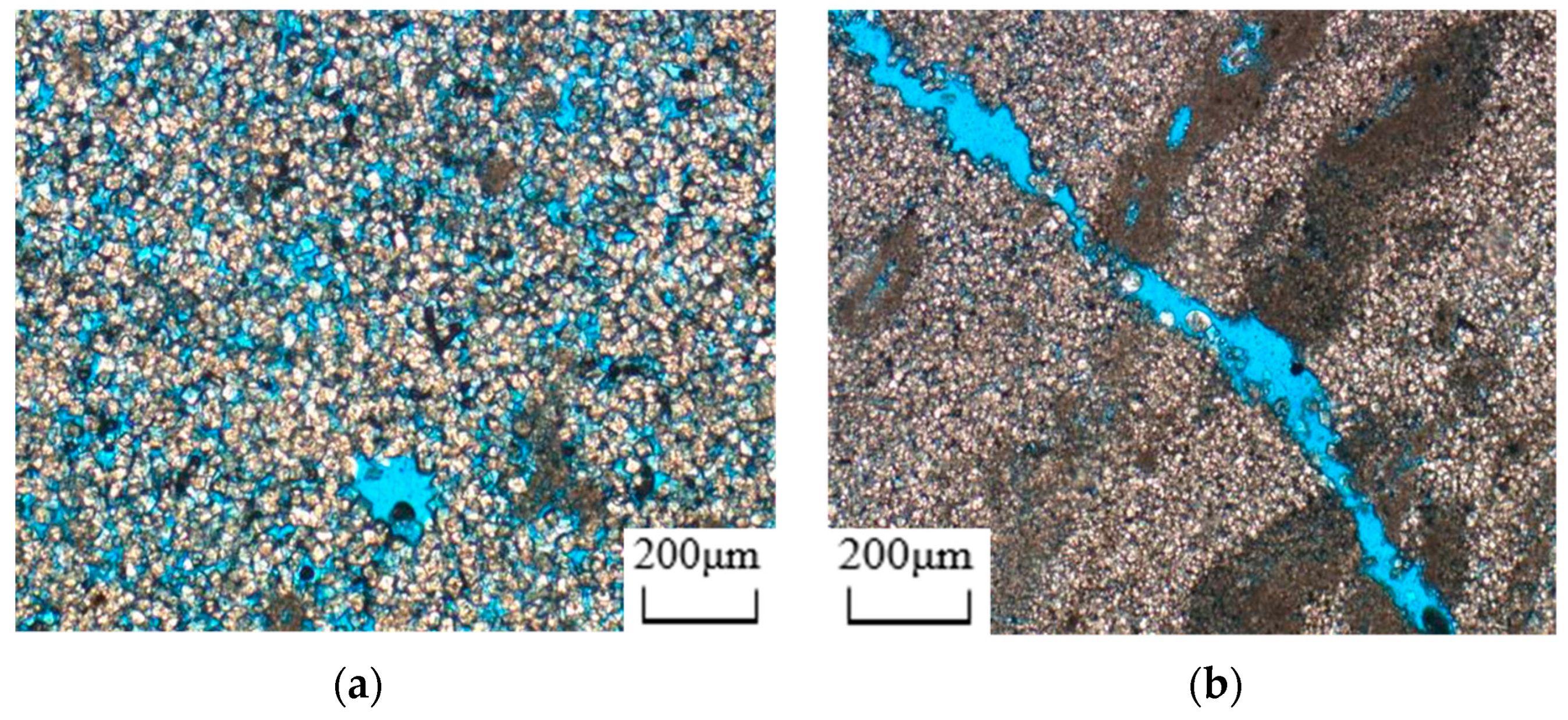
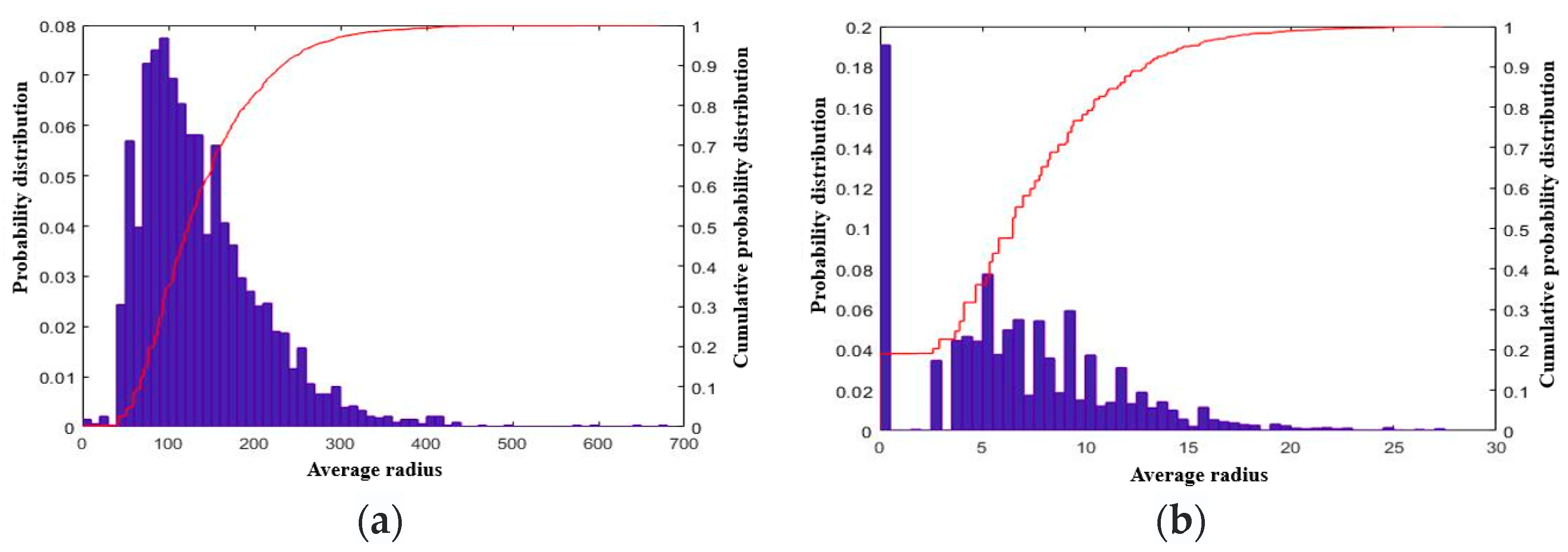
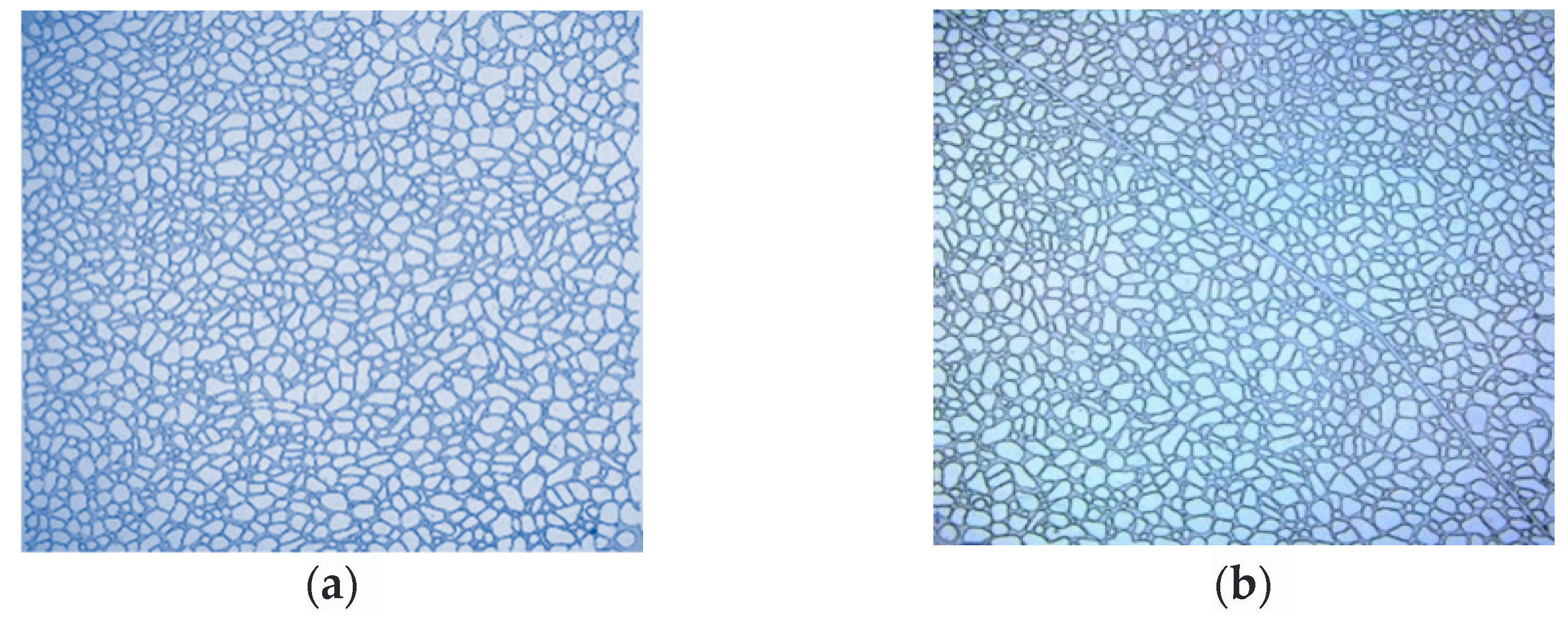
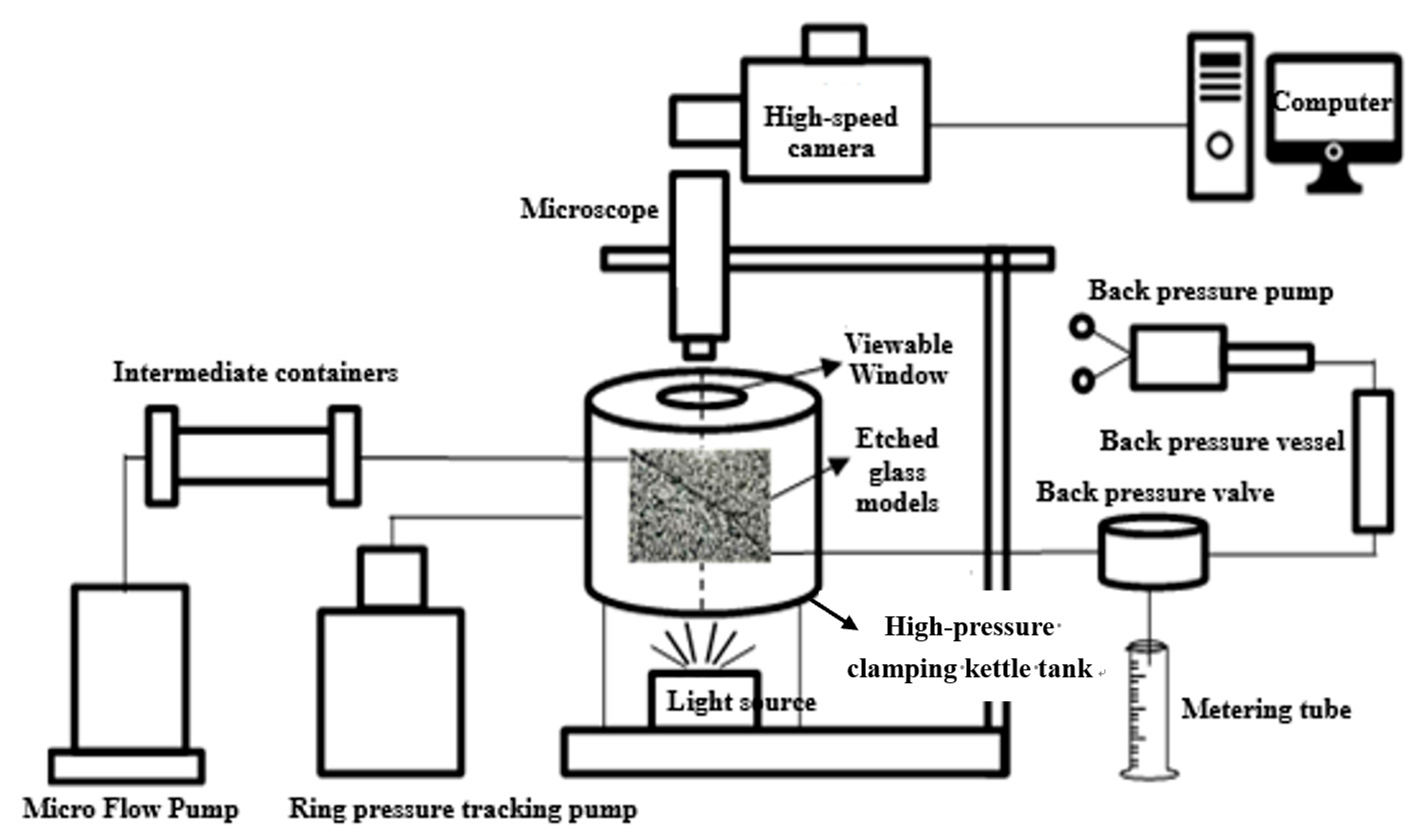

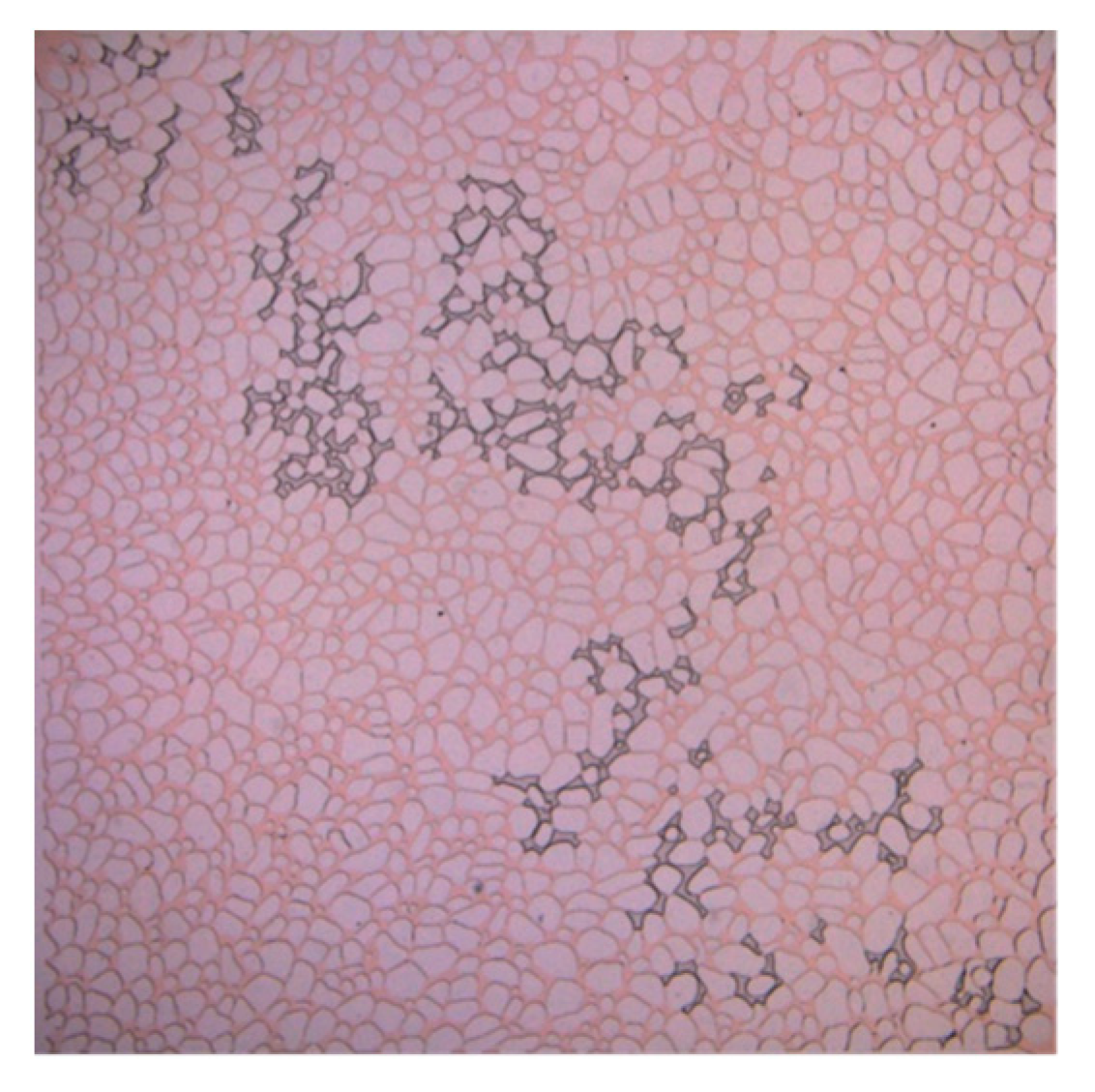
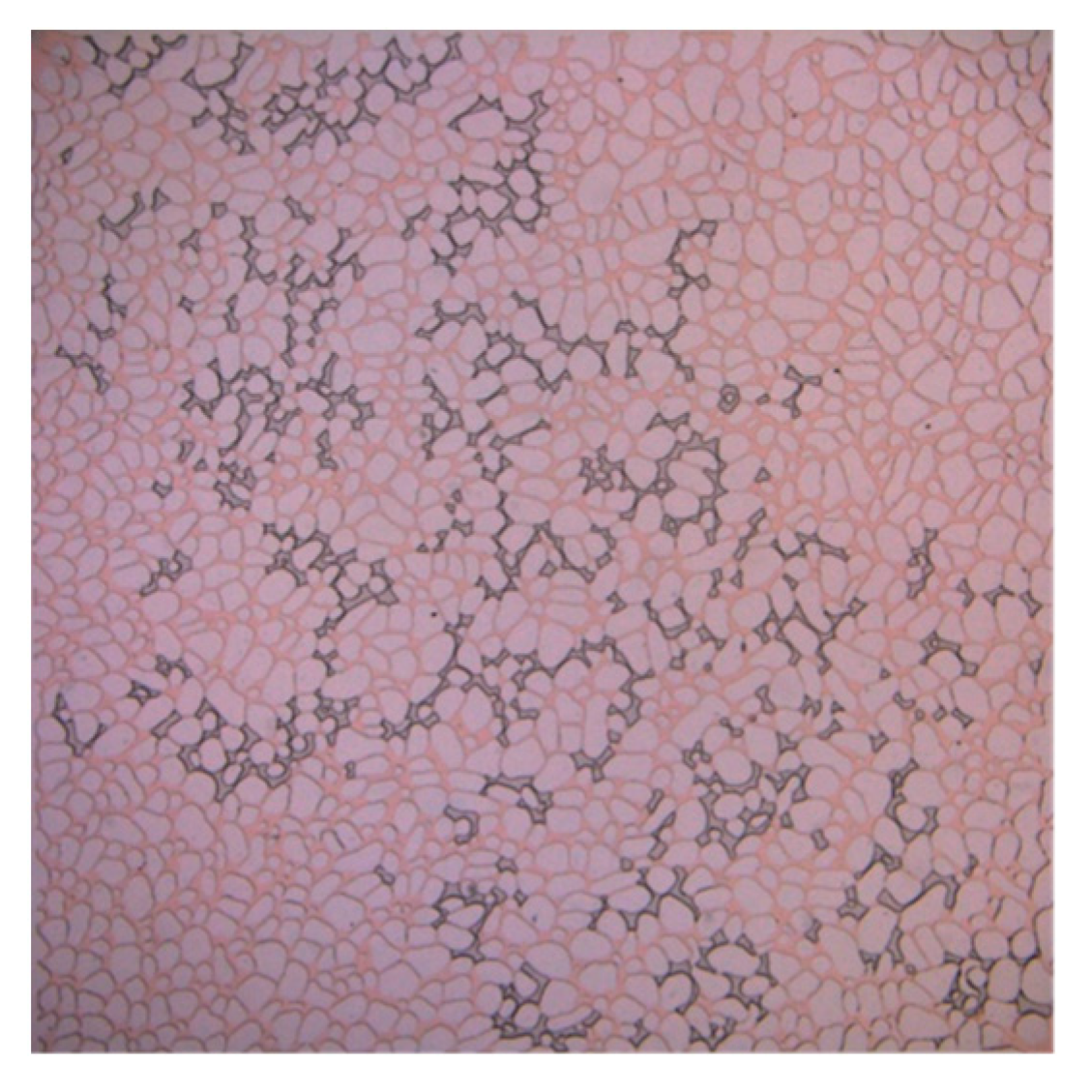
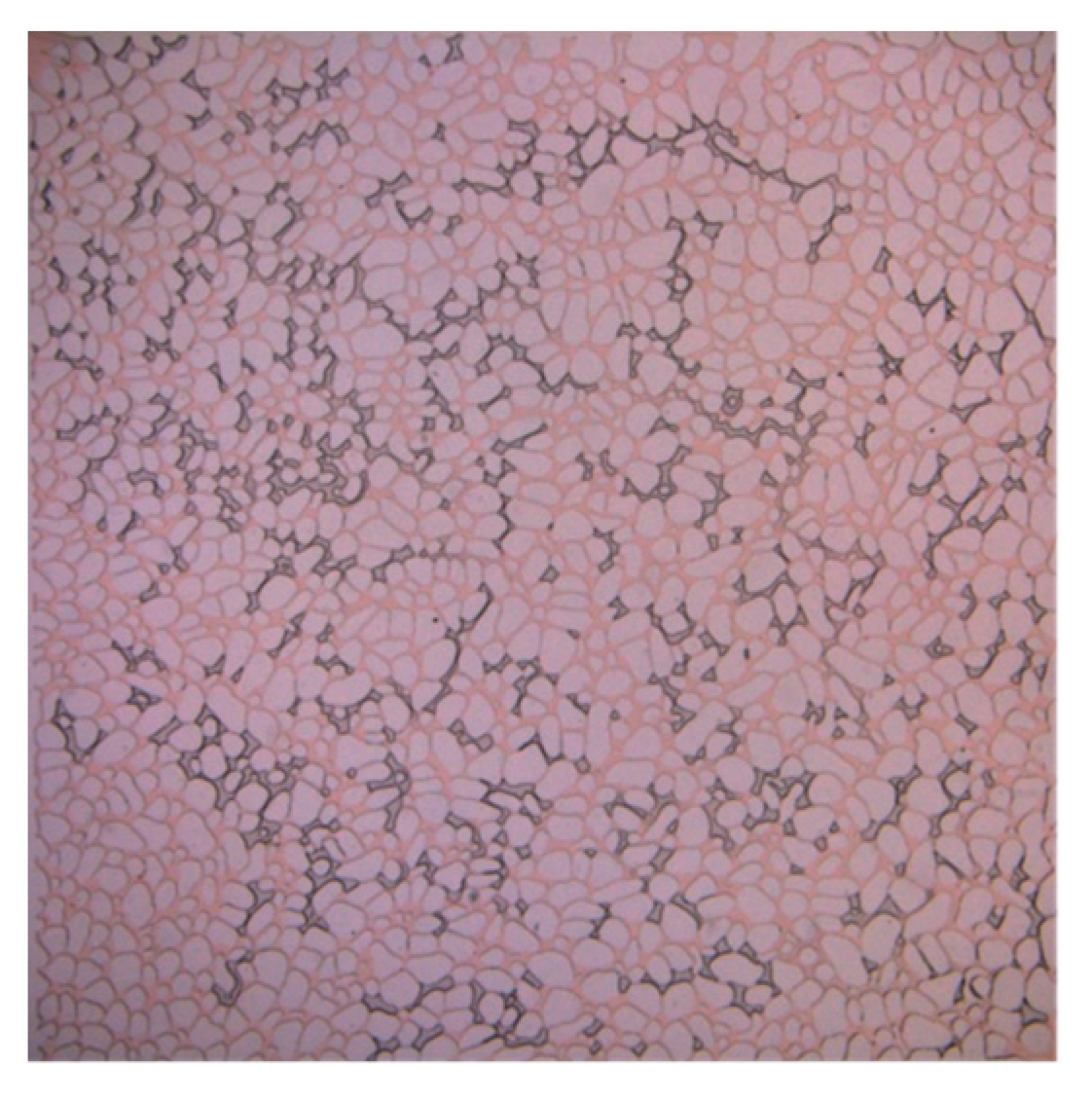

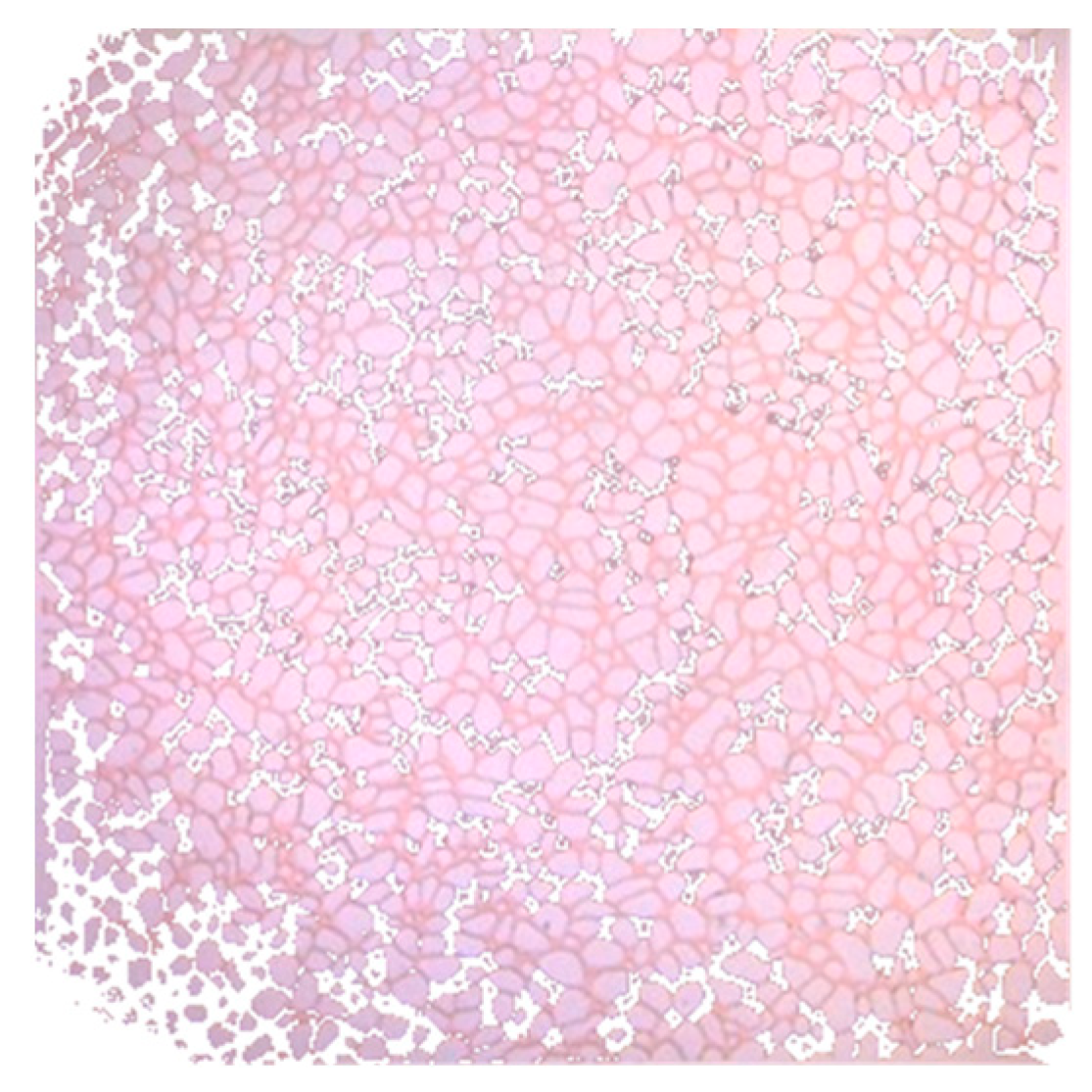
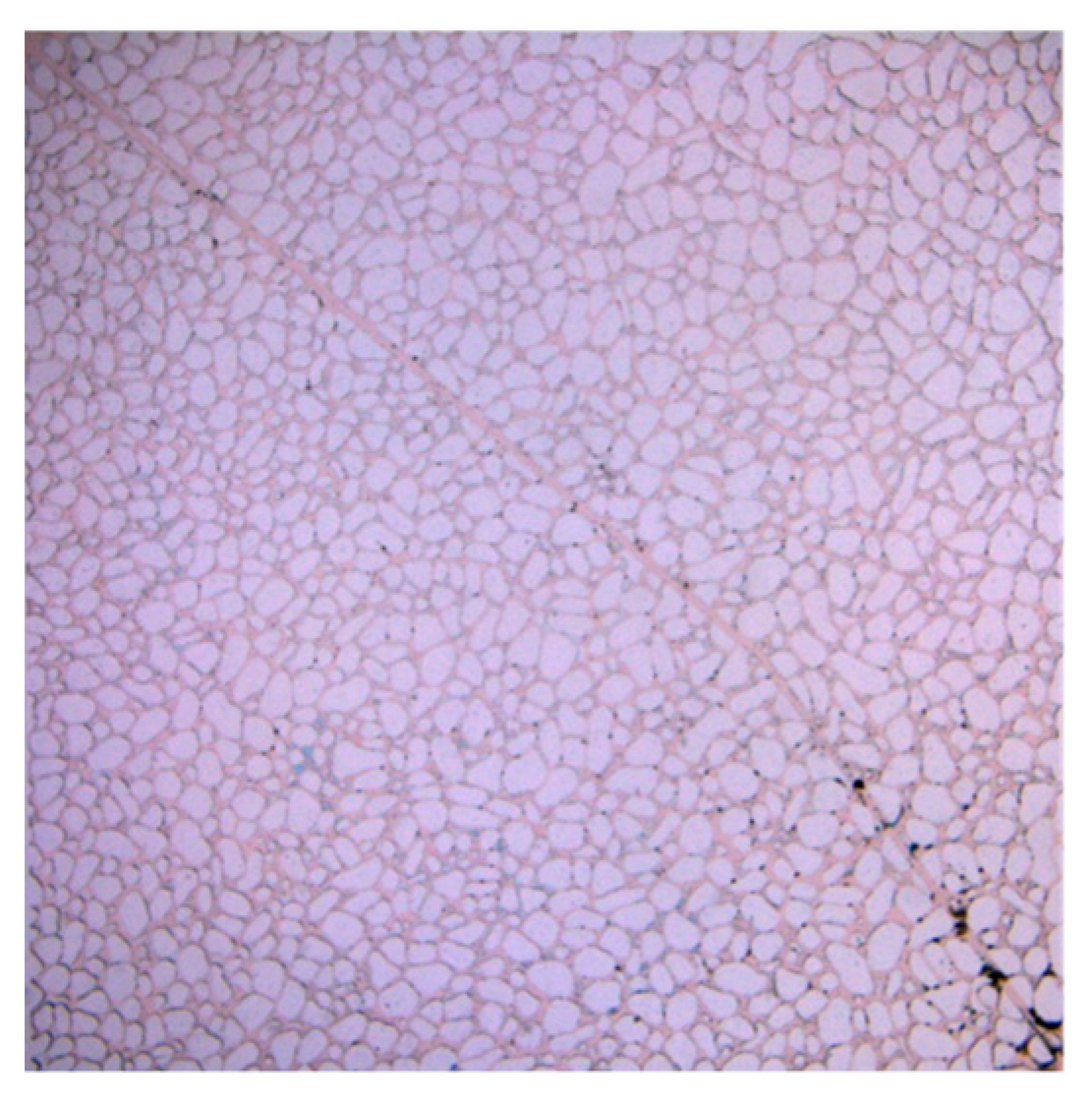

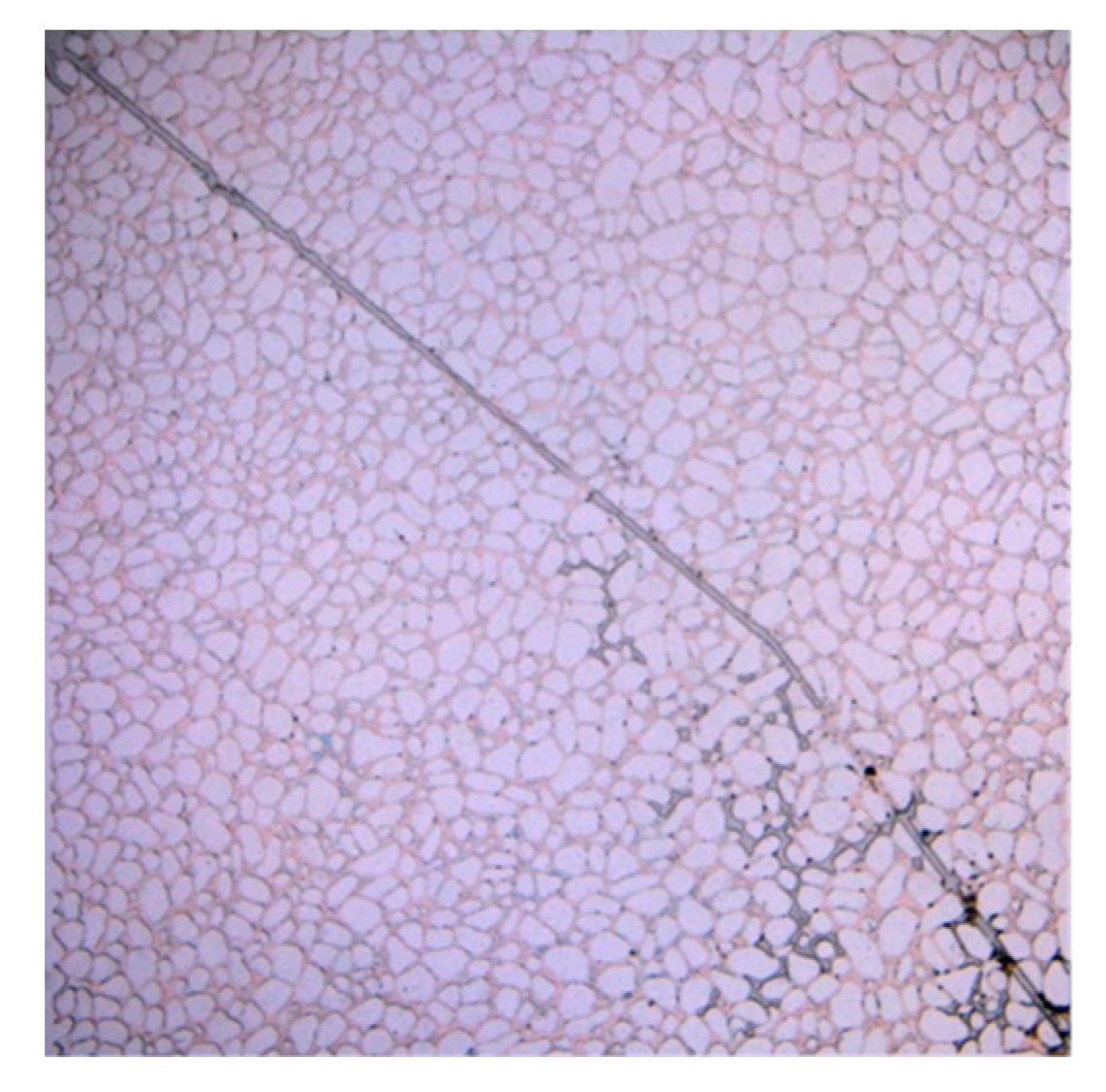
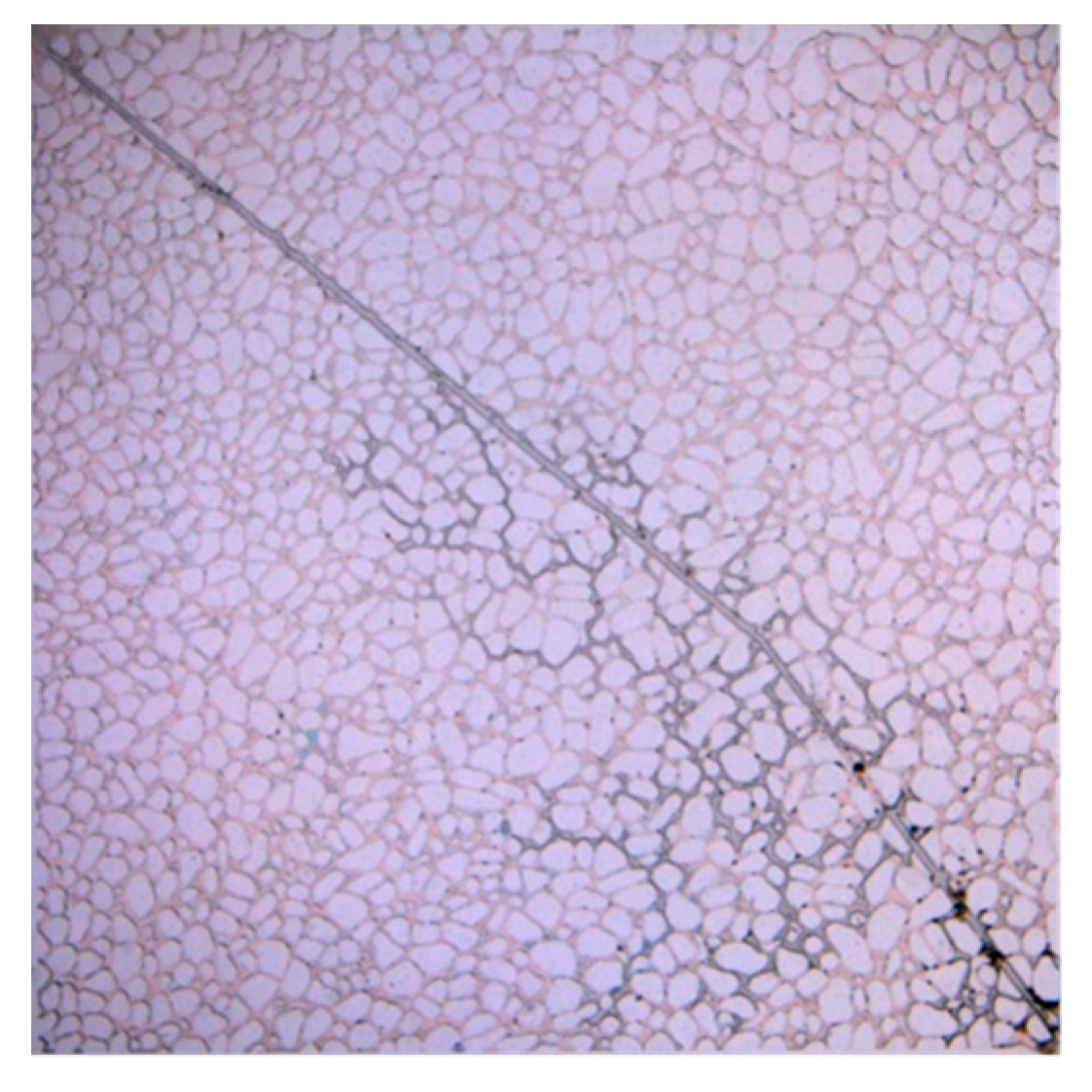
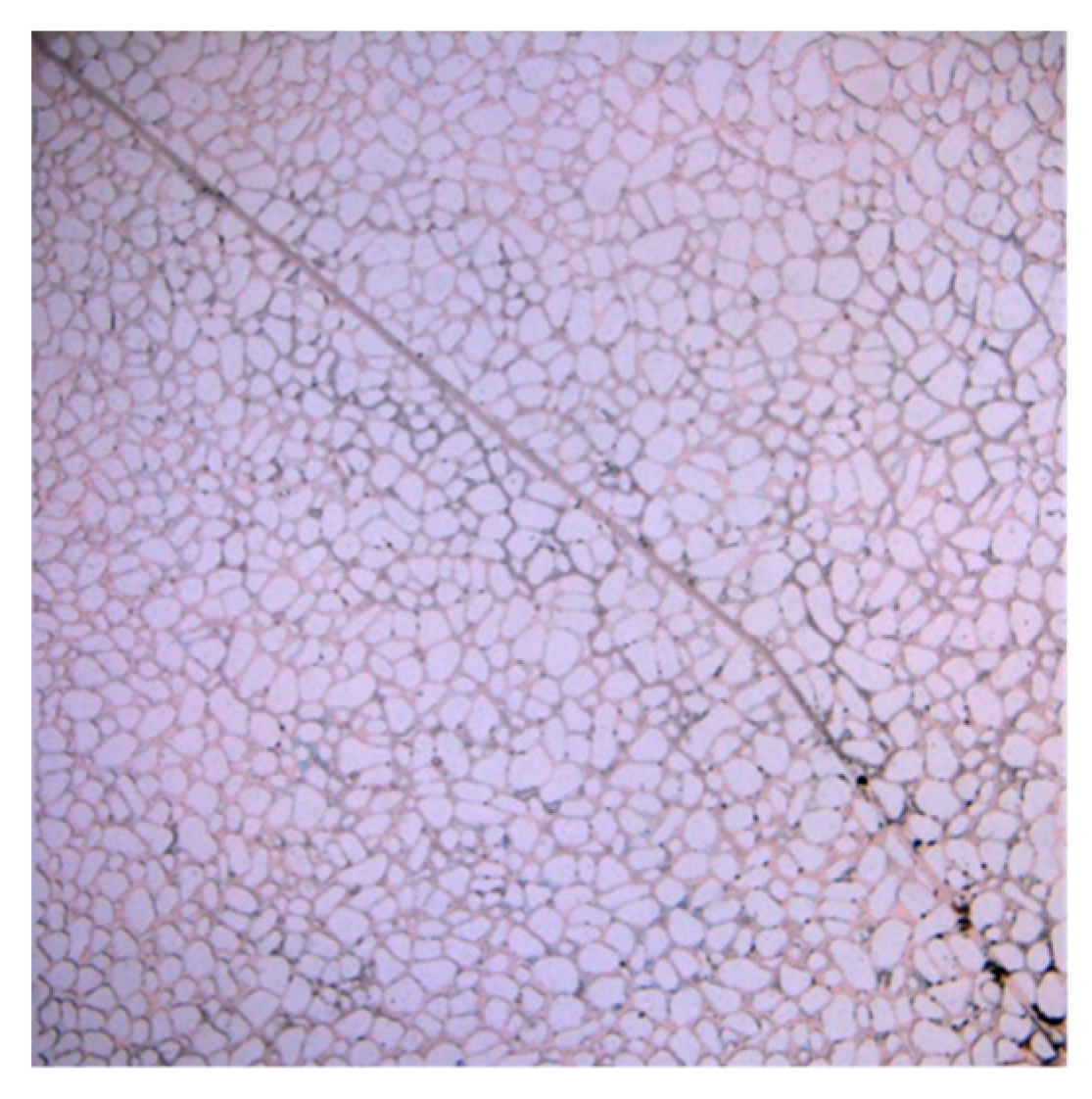
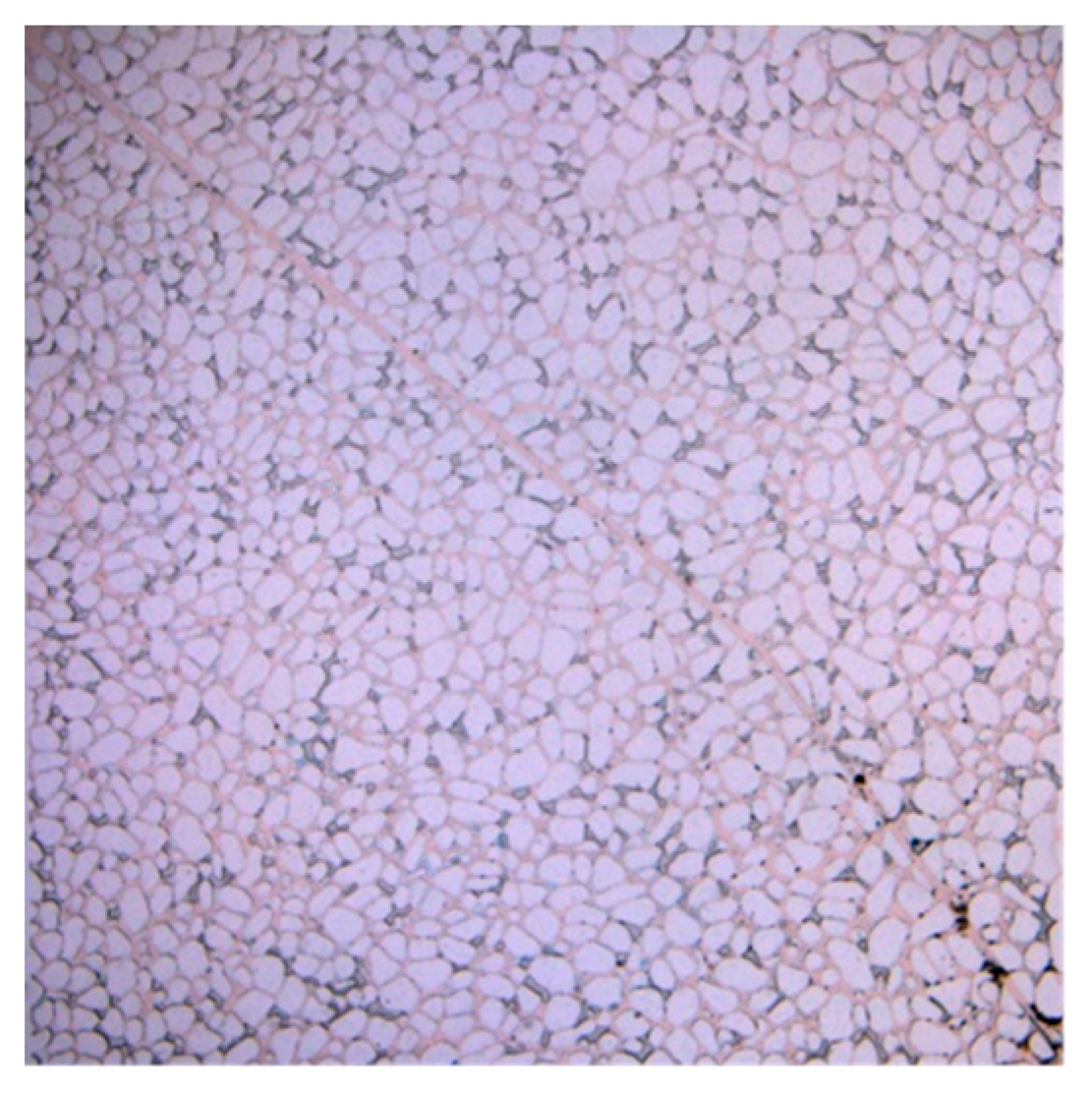
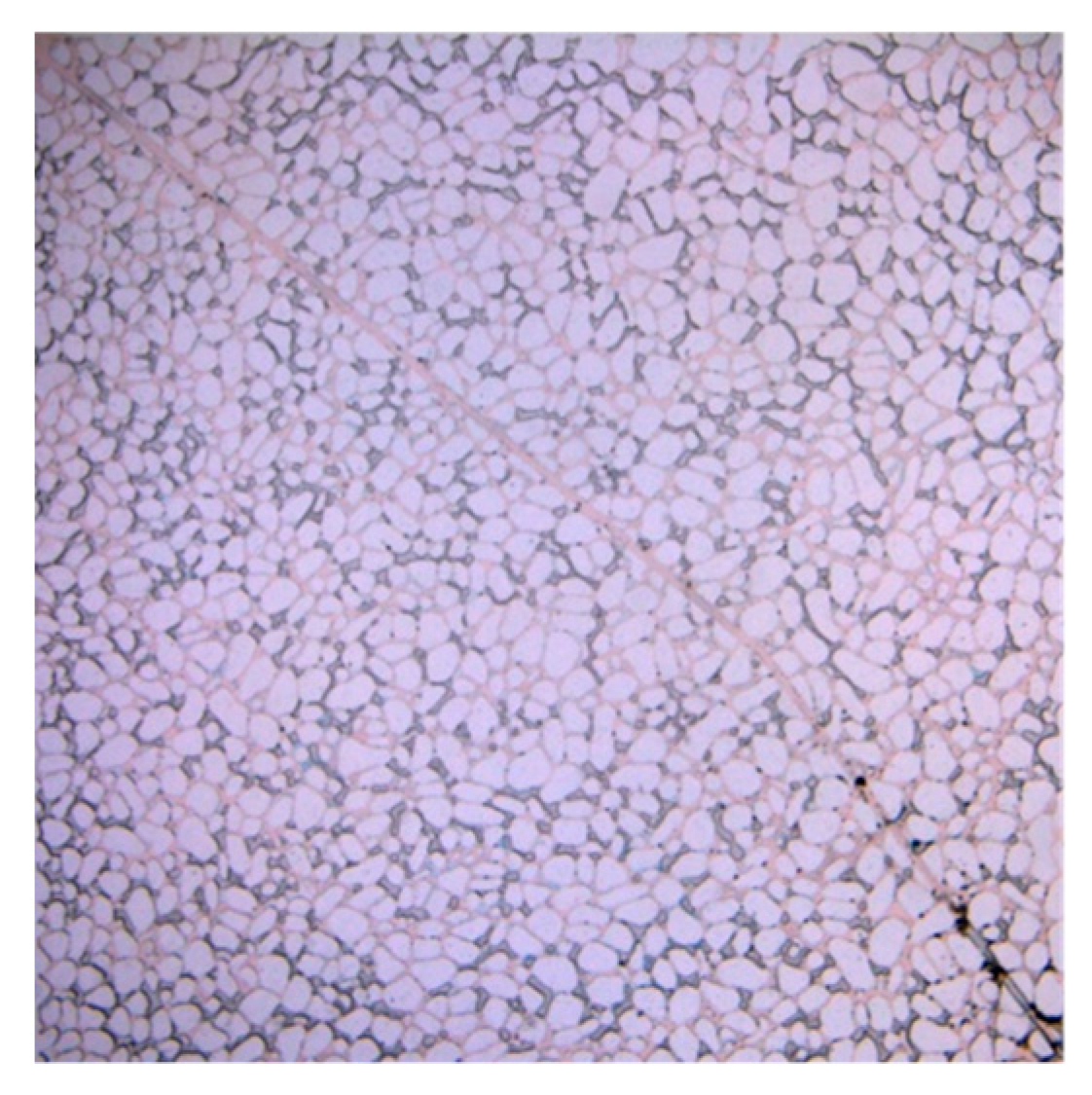
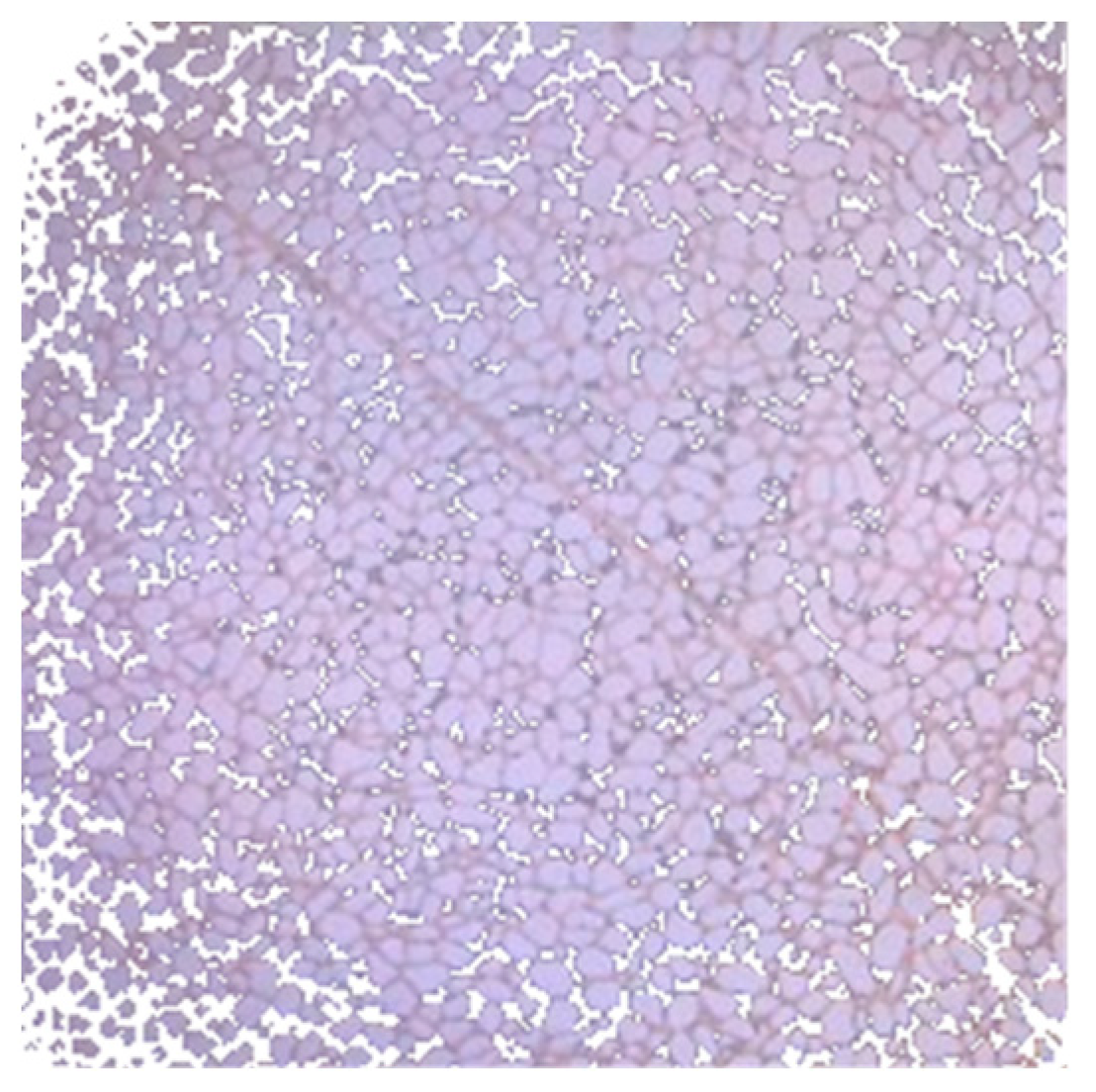
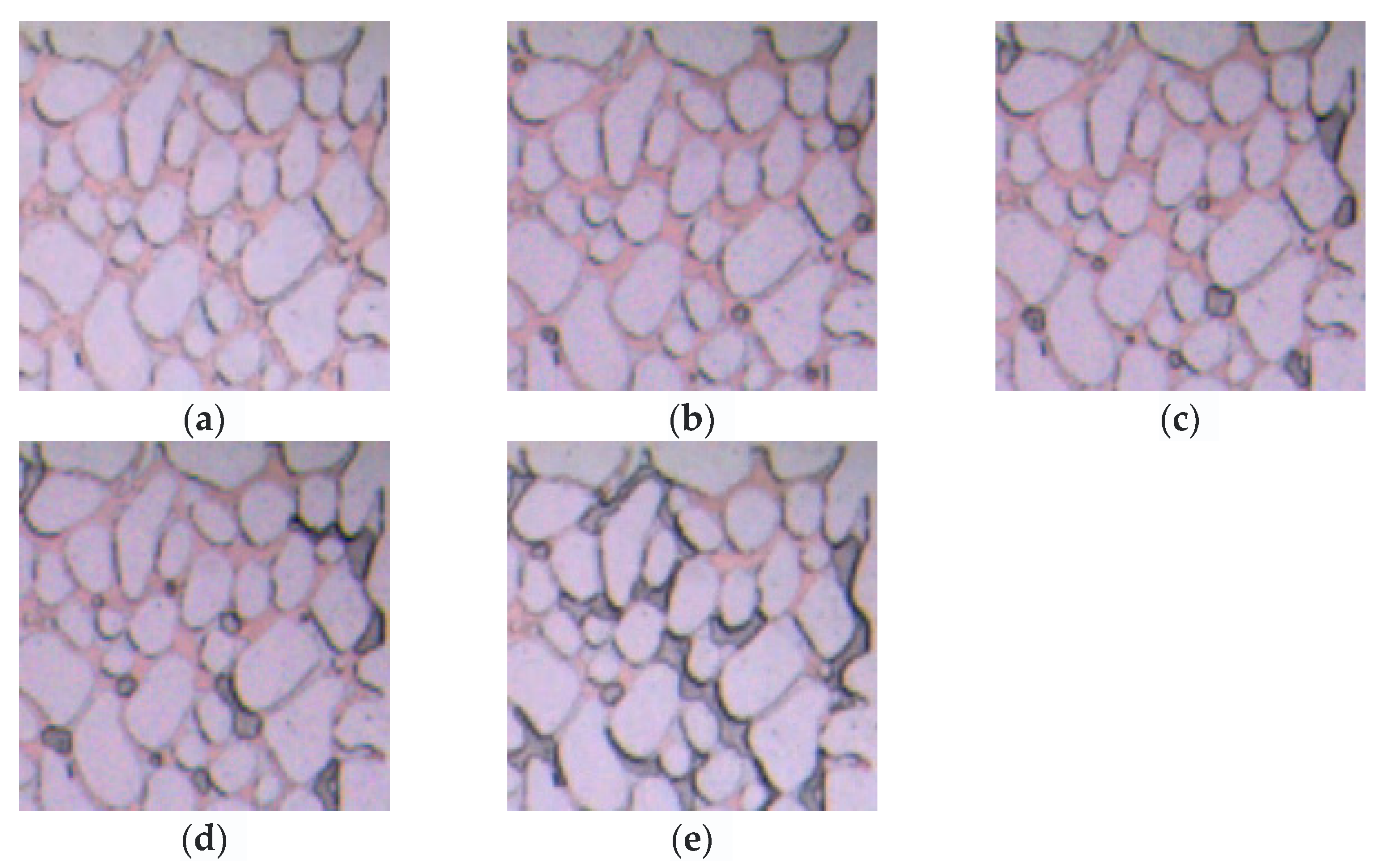

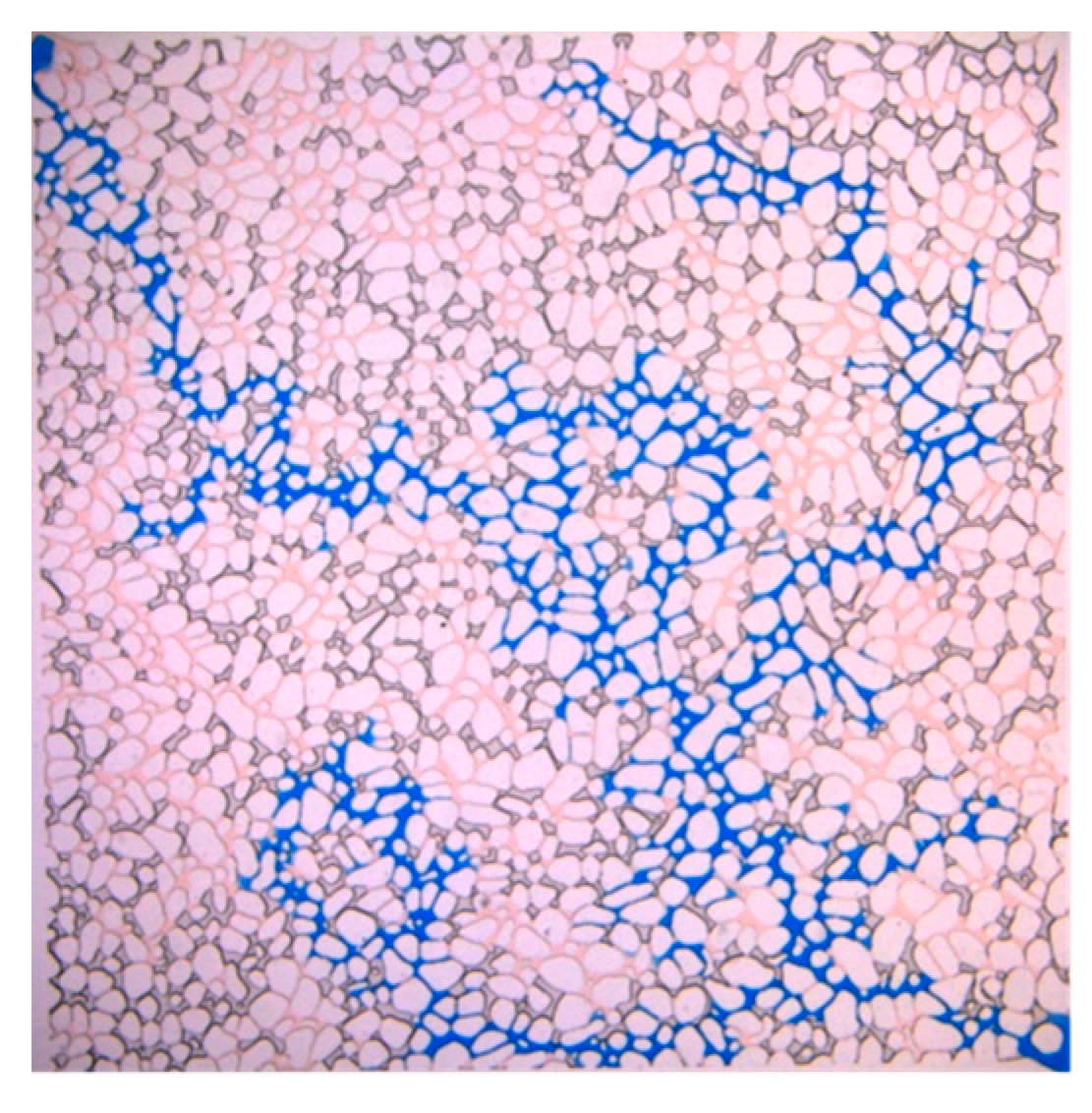
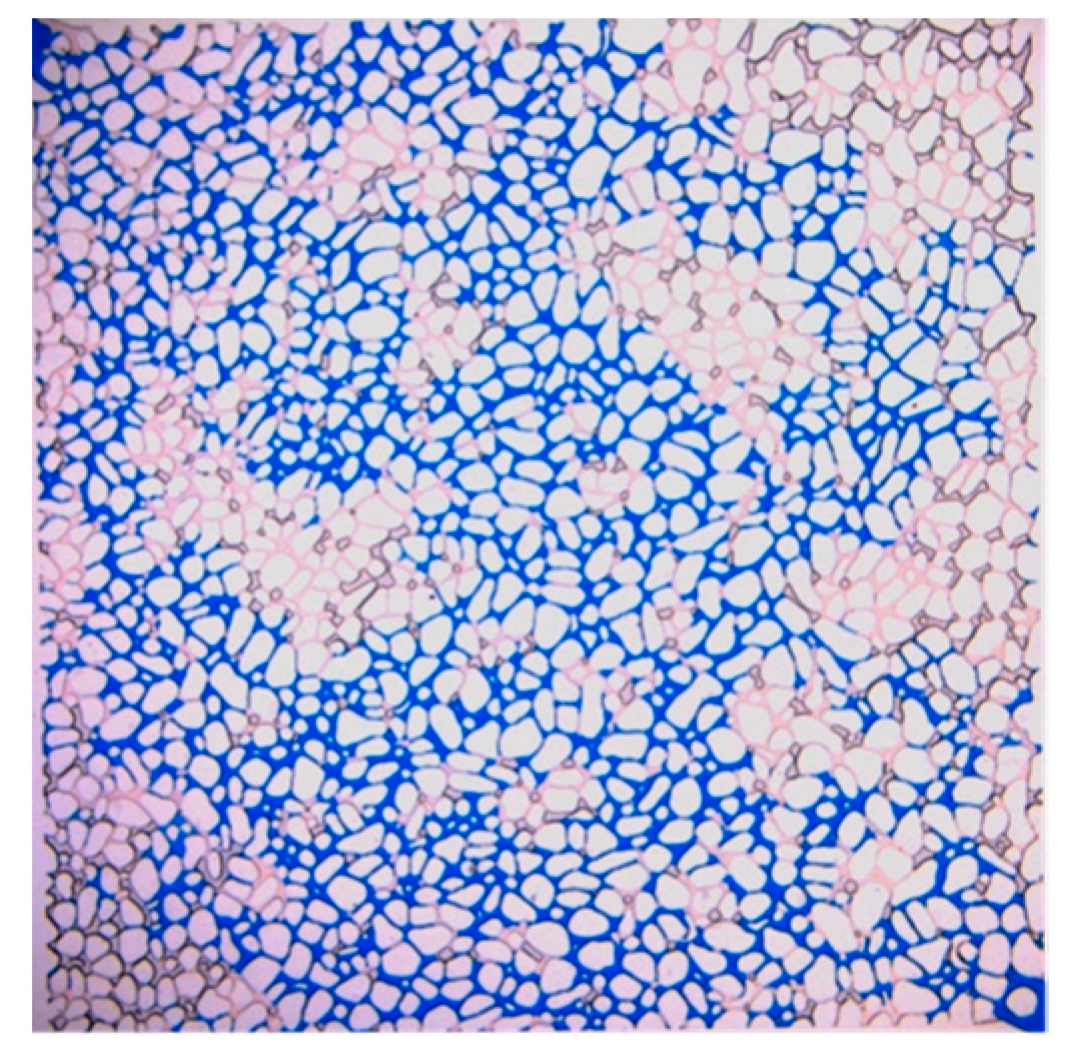
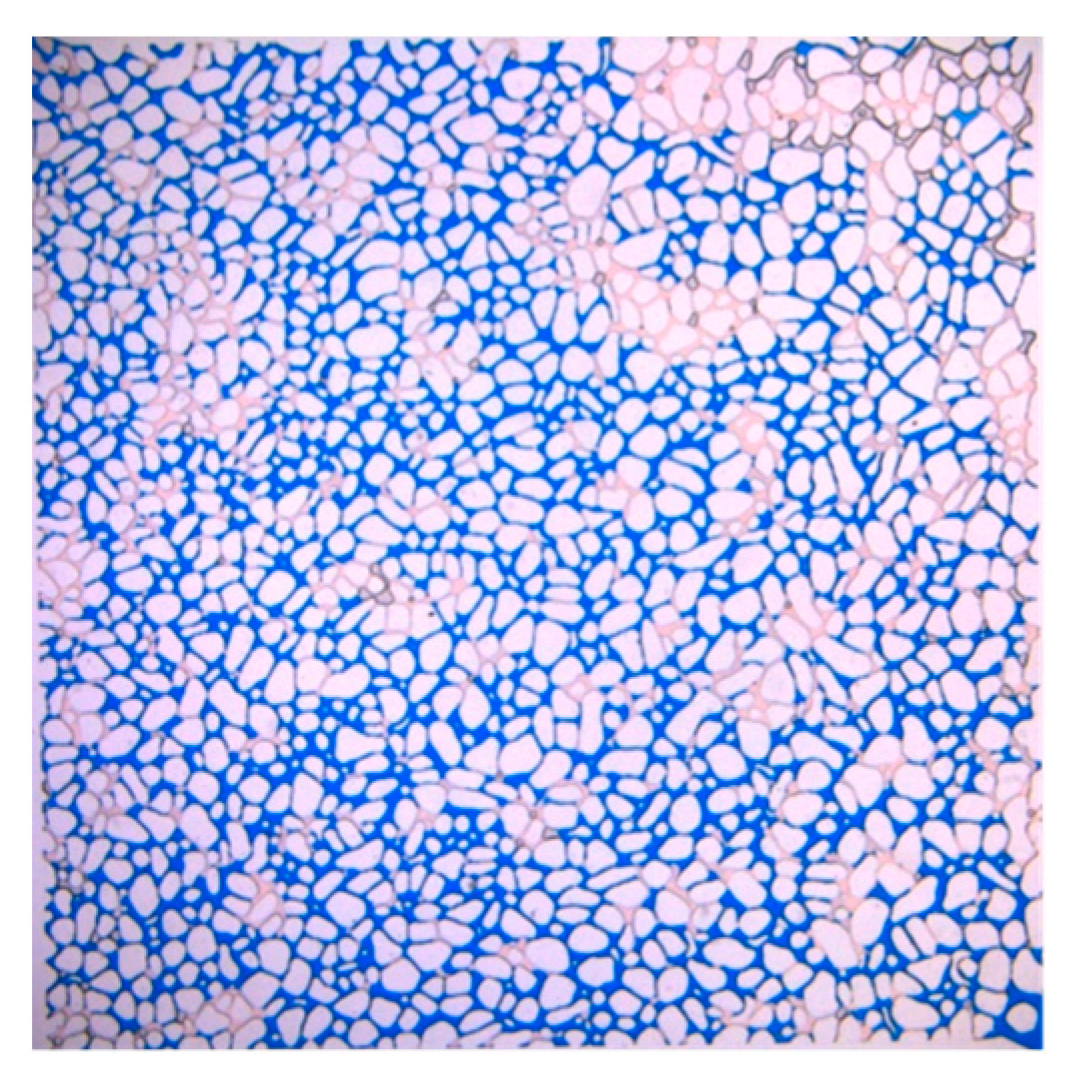
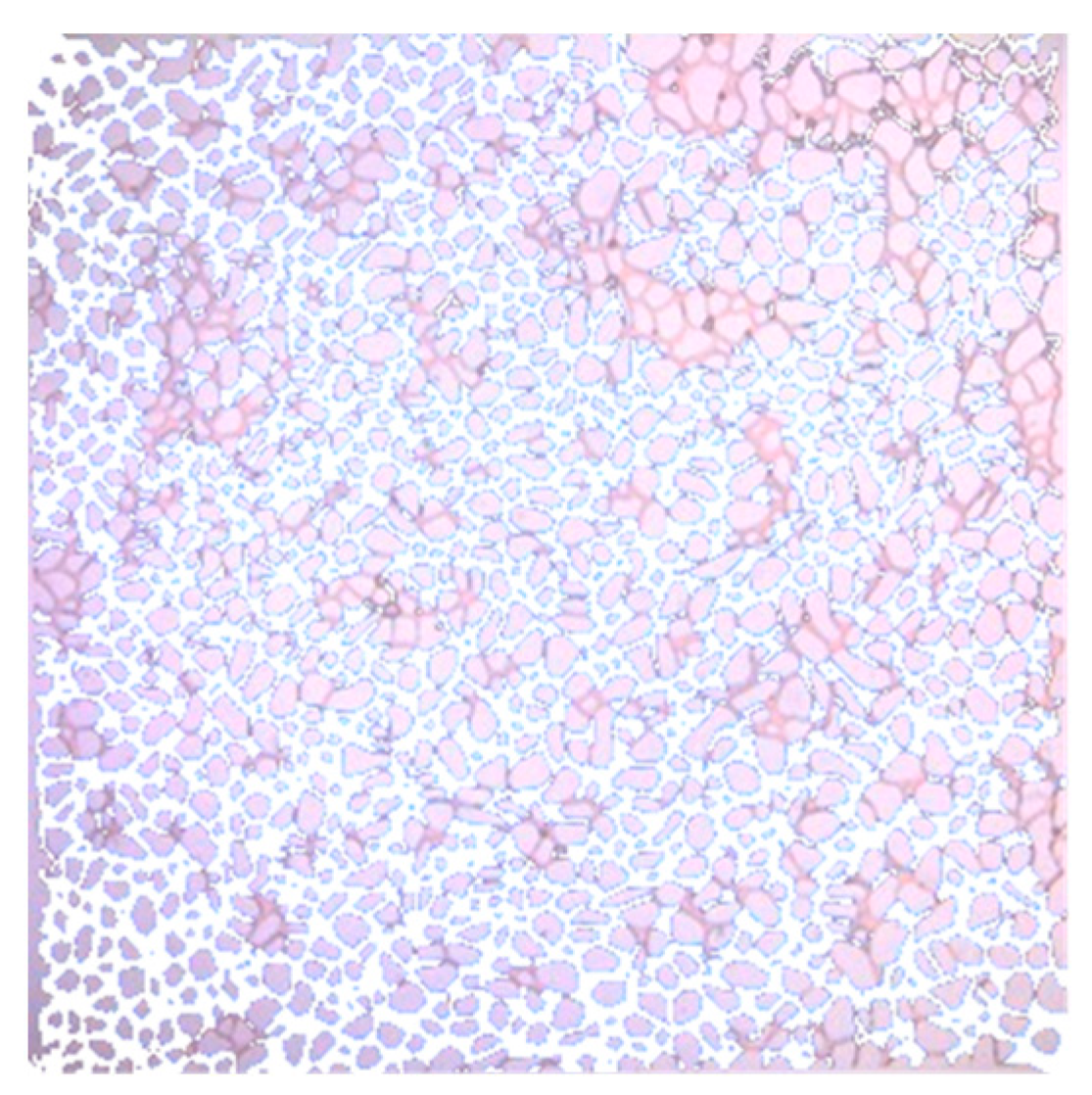
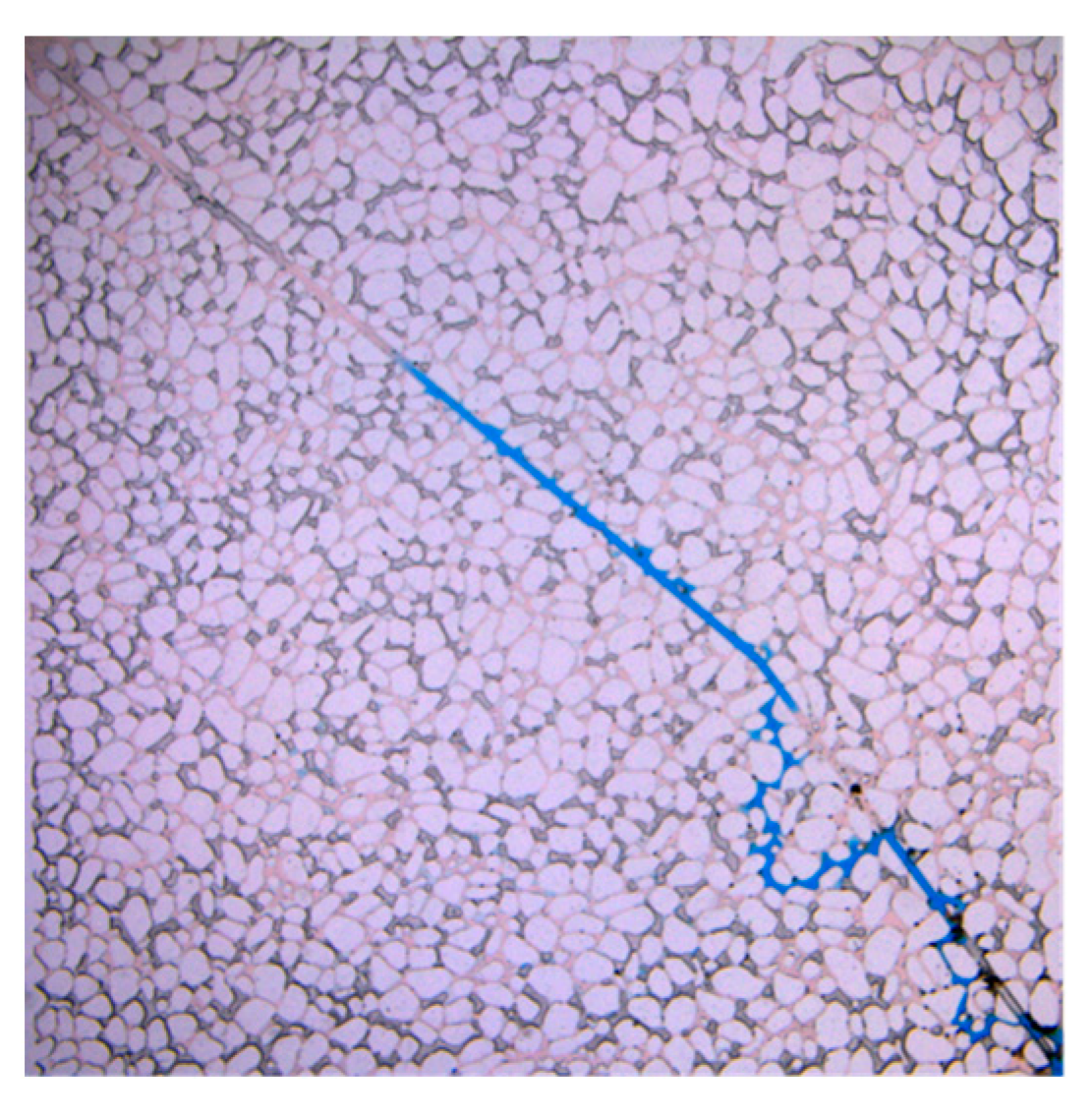
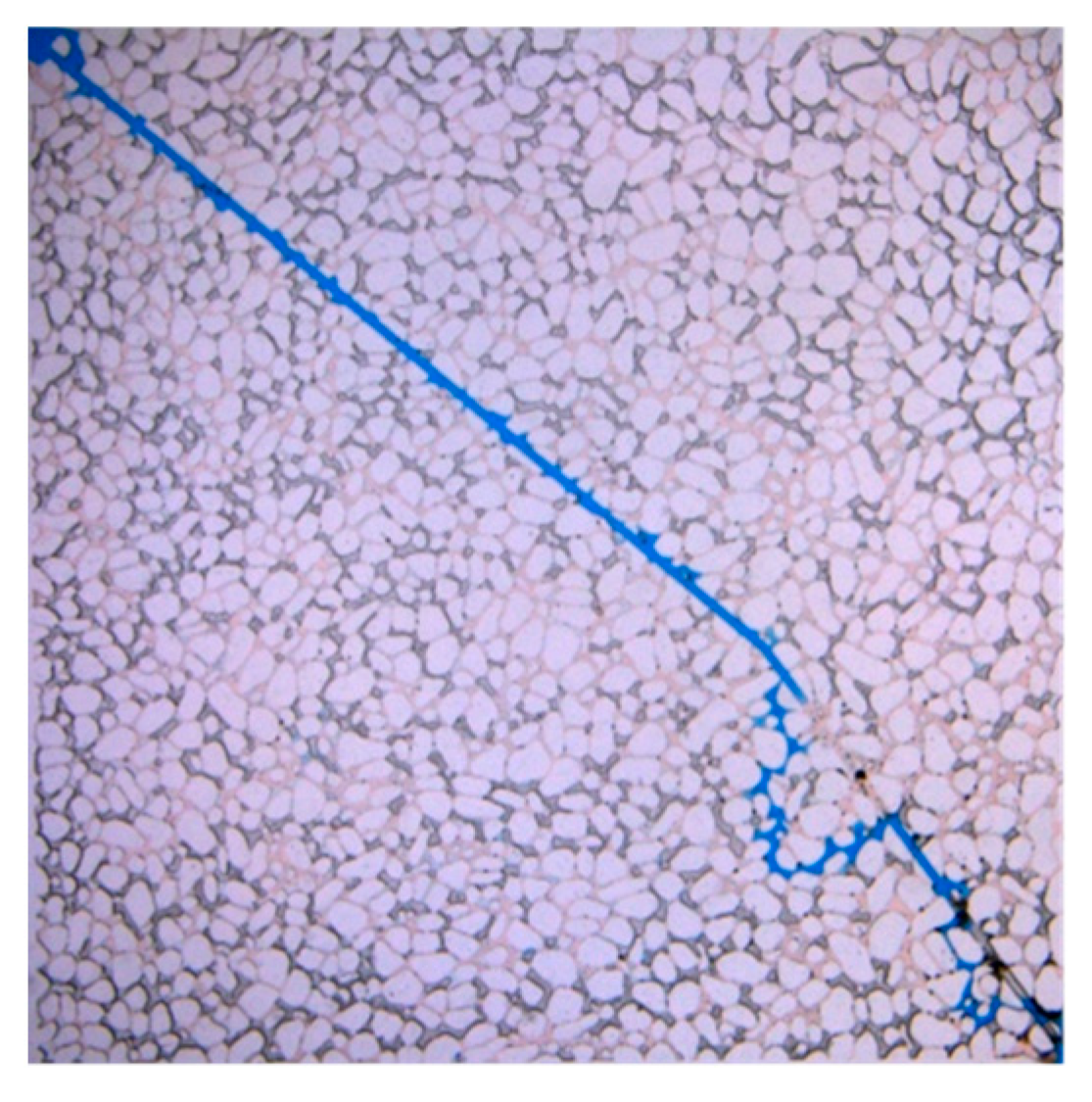
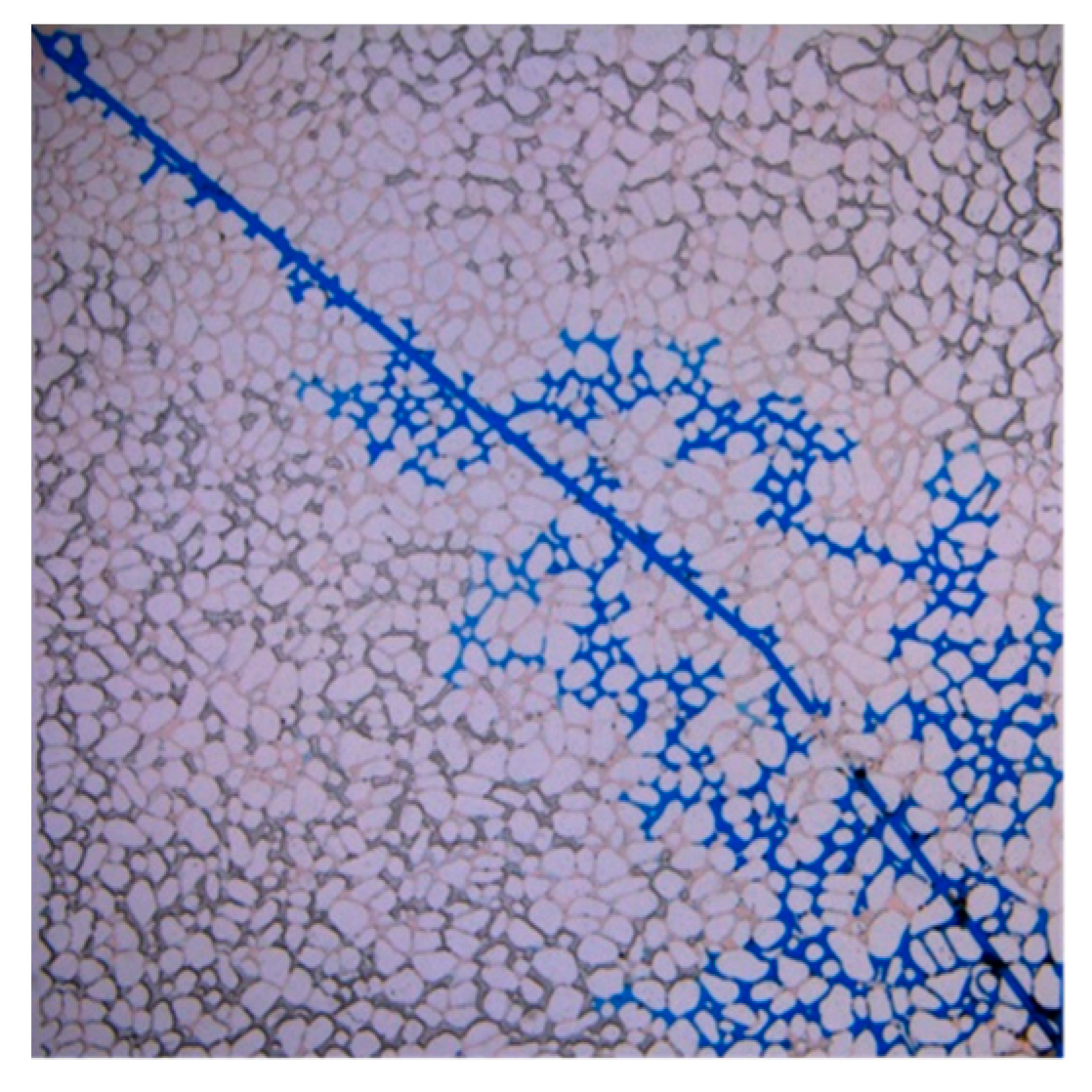

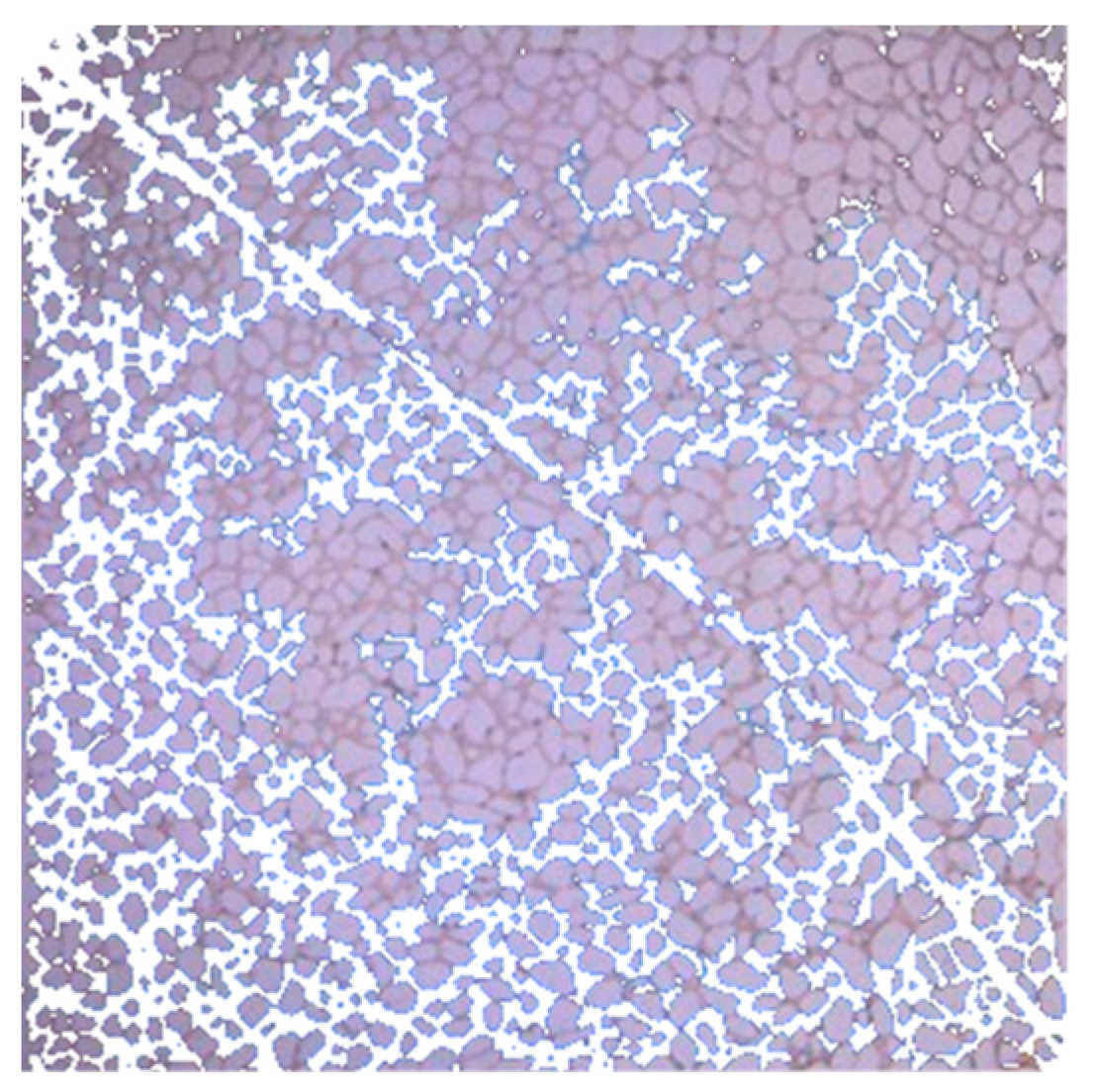
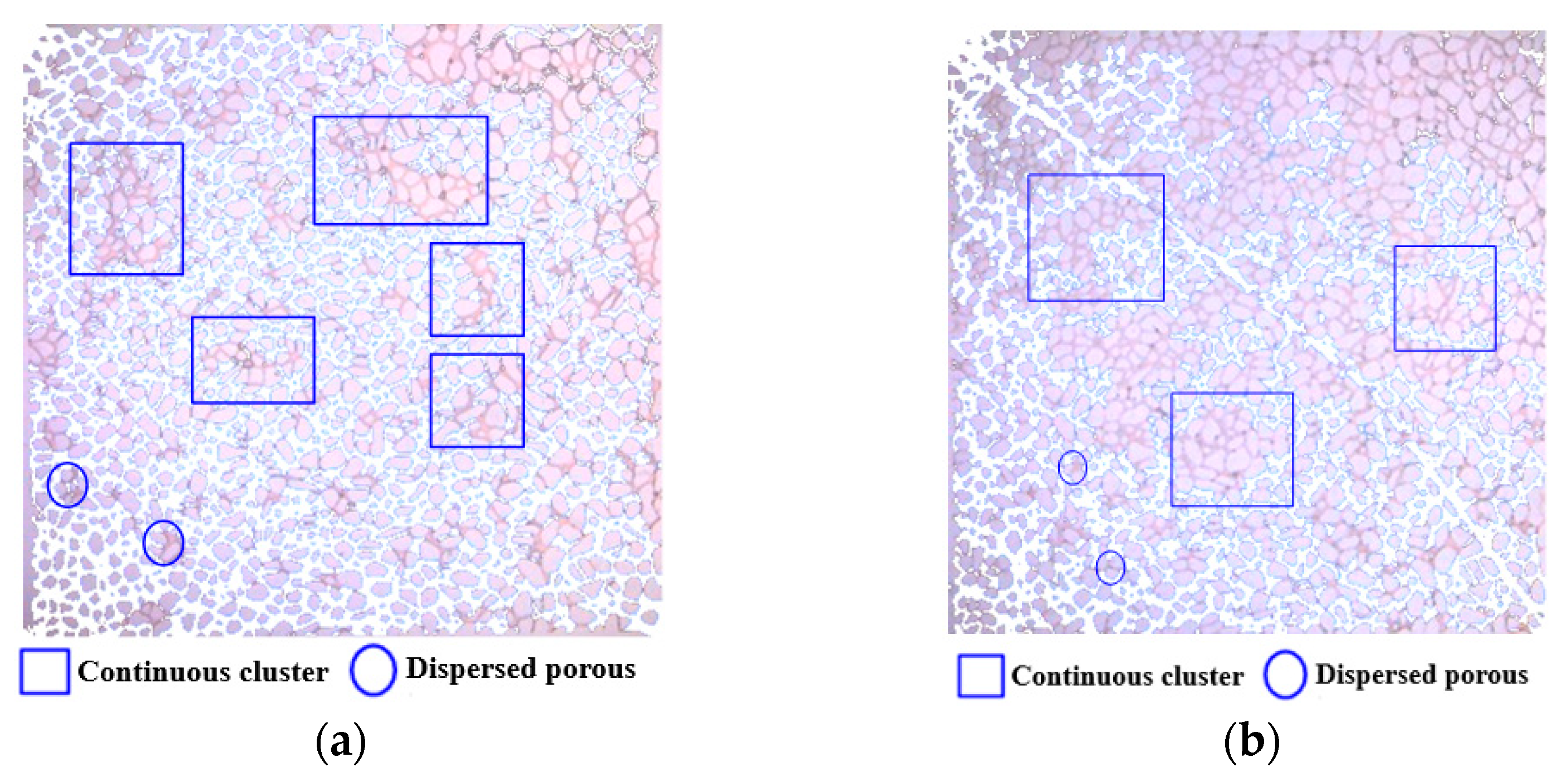
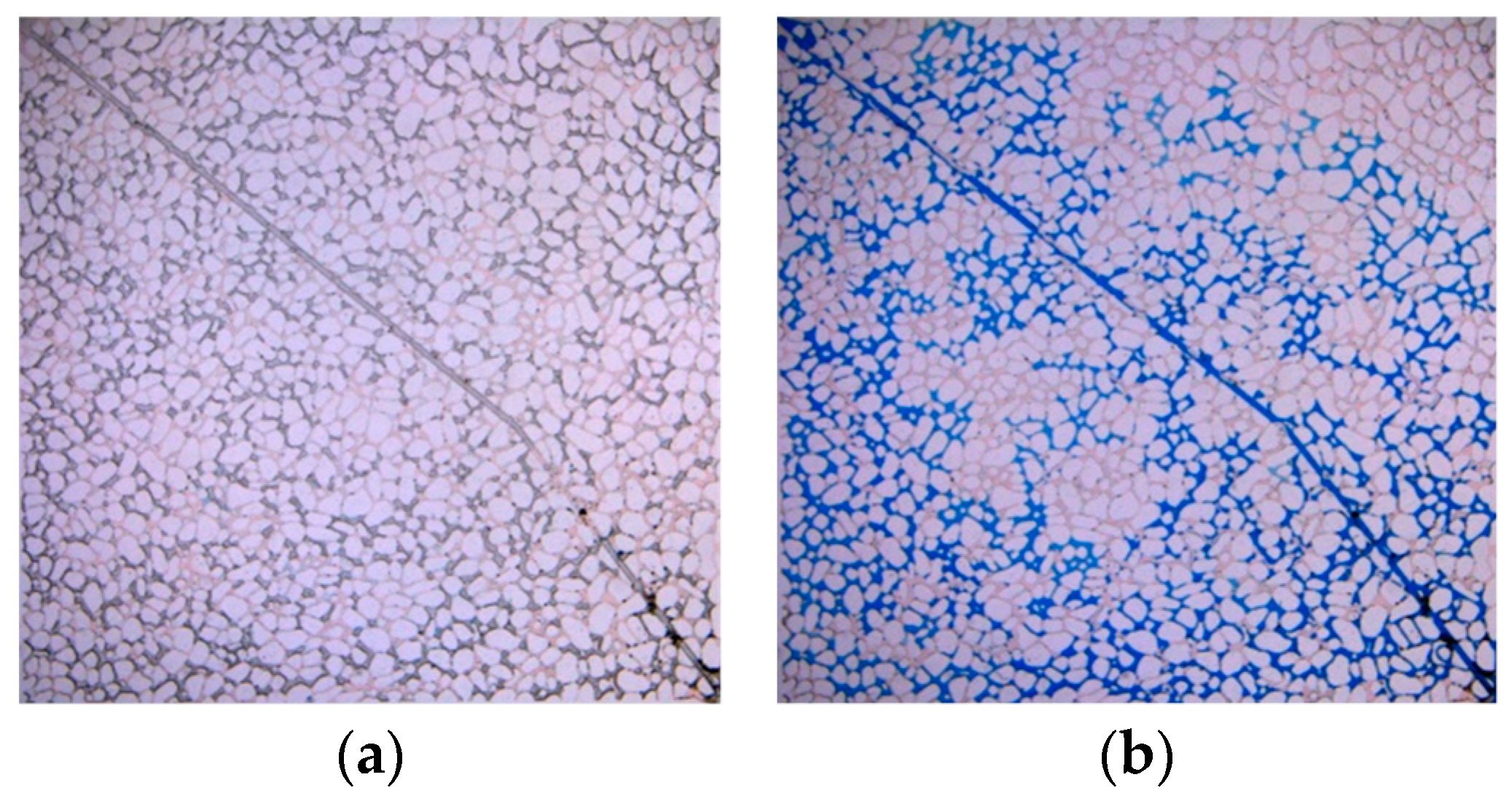




| Serial Number | Horizon | The Name of the Rock | Storage Space (%) | |||||
|---|---|---|---|---|---|---|---|---|
| The Hole | Fissure | Total Hole Seam Surface Ratio | ||||||
| Intergranular Dissolved Pore | Paste Die | The Coelomic Cavity Hole | Solution Pores | Structural Fractures | ||||
| 4-17 | The carboniferous KT-I | Dolomicrite | 23.4 | 0.5 | 3 | 9 | 0.1 | 36 |
| 4-43z | The carboniferous KT-I | Argillaceous and silty dolomite | 8 | 1 | 1 | 5 | 0.1 | 15.1 |
| Model Type | Maximum Aperture (μm) | Minimum Aperture (μm) | Average Aperture (μm) | Concentrated Distribution Range of Aperture (μm) | Seam Width (mm) |
|---|---|---|---|---|---|
| Pore type | 754.29 | 10.57 | 125.82 | 200–400 | / |
| Fracture pore pattern | 754.29 | 10.57 | 125.82 | 200–400 | 0.17 |
Disclaimer/Publisher’s Note: The statements, opinions and data contained in all publications are solely those of the individual author(s) and contributor(s) and not of MDPI and/or the editor(s). MDPI and/or the editor(s) disclaim responsibility for any injury to people or property resulting from any ideas, methods, instructions or products referred to in the content. |
© 2023 by the authors. Licensee MDPI, Basel, Switzerland. This article is an open access article distributed under the terms and conditions of the Creative Commons Attribution (CC BY) license (https://creativecommons.org/licenses/by/4.0/).
Share and Cite
Jia, P.; Li, Y.; Guo, H.; Feng, H.; Cheng, L. Experimental Study of Pore-Scale Water Flooding with Phase Change Based on a Microfluidic Model in Volatile Carbonate Reservoirs. Appl. Sci. 2023, 13, 6642. https://doi.org/10.3390/app13116642
Jia P, Li Y, Guo H, Feng H, Cheng L. Experimental Study of Pore-Scale Water Flooding with Phase Change Based on a Microfluidic Model in Volatile Carbonate Reservoirs. Applied Sciences. 2023; 13(11):6642. https://doi.org/10.3390/app13116642
Chicago/Turabian StyleJia, Pin, Yang Li, Hongxin Guo, Haoran Feng, and Linsong Cheng. 2023. "Experimental Study of Pore-Scale Water Flooding with Phase Change Based on a Microfluidic Model in Volatile Carbonate Reservoirs" Applied Sciences 13, no. 11: 6642. https://doi.org/10.3390/app13116642
APA StyleJia, P., Li, Y., Guo, H., Feng, H., & Cheng, L. (2023). Experimental Study of Pore-Scale Water Flooding with Phase Change Based on a Microfluidic Model in Volatile Carbonate Reservoirs. Applied Sciences, 13(11), 6642. https://doi.org/10.3390/app13116642





